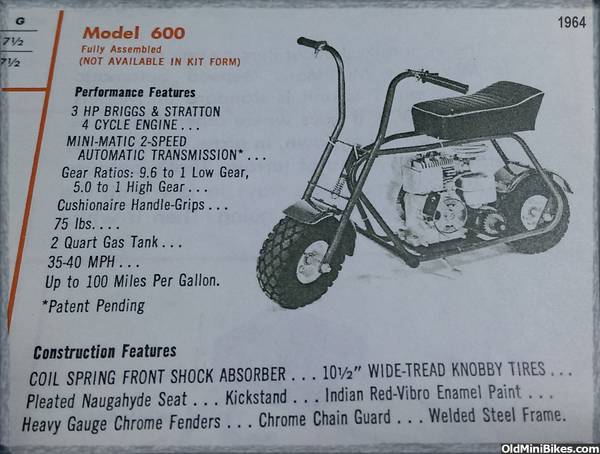

Hi, guys. I am wondering if anybody can help me identify the year and model of my lil Indian mini bike. I just purchased it and would like to replace the seat with the correct style. (flat or kick-up) Also this motor has to go. The clone motor power band comes on too abruptly making it hard to control on such a small bike. It's not fun. I feel like I'm going to flip or fall off it at any speed. My 12 year old already flipped the bike backwards and fell off it trying to take off. I am going to replace the clone motor with a my 1958 2 1/4 Briggs.
This is going to be a rider, not a show bike, though I would like it some what original.
What I know:
- It's a 1960's Lil Indian
- Its was obviously recently restored
- Serial 129, 129# or 129## (paint is thick in that area hard to tell if there is a 4th or 5th digit) [serial # is located on right rear dropout]
- Non hole Briggs style motor plate (non-notched corners)
- Small 7/8 steering head tube
- Spring front end (appears to be original)
- Foot rests are the same length LH & RH
- 13" motor height
- 4" aluminum wheels (appear to be aftermarket)
- Welded fender mounts (appear to be original) [non twist bracket]
- Fenders appear to be aftermarket
- No witness of disc brake brackets on either side of the frame. If they were cut off and ground down, then the person did a superb job.
What I would like to know:
- The year?
- The model?
- The correct seat style? (flat or kick-up)
- The correct Briggs engine size?
- Did lil Indian ever offer a non spot disc brake option?
I'm not too crazy about the look of the fenders. Will I ruin the looks of the bike and originality if I ditch them, and obviously keep the brackets attached?
Any info on this bike would be greatly appreciated
Thanks,
Combat Chuck


